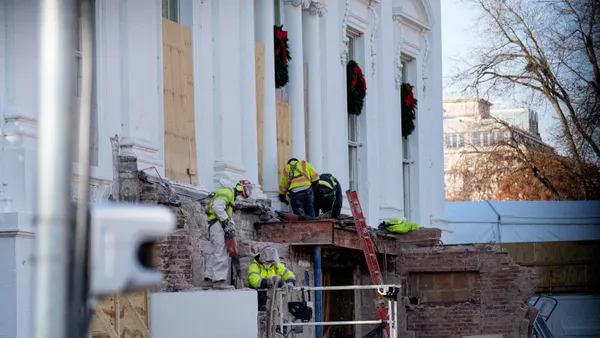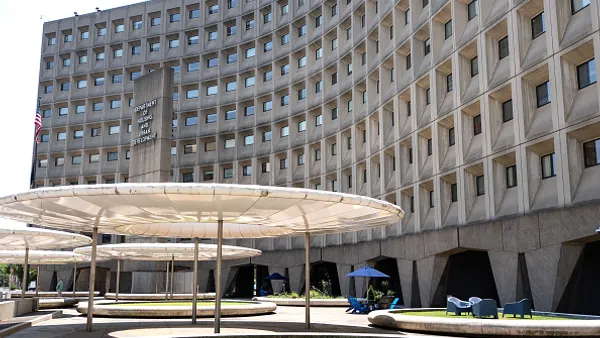OSHA has been fairly aggressive about updating the construction industry about how employers should respond to actual and suspected cases of COVID-19 and how it will enforce suspected violations of health and other safety standards during the pandemic. However, a recent webinar, hosted by the Associated General Contractors of America and featuring attorney Bradford Hammock from Littler Mendelson P.C.'s Virginia office, shed some additional light on what contractors can expect from OSHA in the near-term regarding COVID-19 and other issues.
COVID-19 investigations
Phone and fax investigations. Hammock said construction sites are not high-priority targets for novel coronavirus-related inspections; therefore, contractors can expect that OSHA actions in regard to these types of investigations likely will be handled via phone and fax.
If OSHA receives a complaint and it does not meet the criteria for an on-site inspection, the agency might simply call the employer, describe the alleged hazards and follow up with a fax or letter. The employer has five days to respond in writing to the allegations, identify in its written response any problems and the corrective actions taken or planned. If the employer response is sufficient, OSHA typically will not conduct an on-site inspection.
On-site inspections. As some areas return to a rate of low-community spread, OSHA will start to return to a normal inspection routine, meaning more on-site visits, Hammock said, However, contractors should expect the agency to shift its schedule according to how severe the spread of COVID-19 is at the moment in any particular inspection area.
Inspection standards. Although OSHA has said it will not develop a COVID-19 standard — and has thus far come out on top in court regarding this — there are several safety standards that inspectors can use to cite and fine employers when they find related hazards, Hammock said.
For example, the General Duty Clause in Section 5(a)(1) requires employers to "furnish to each of his employees employment and a place of employment which are free from recognized hazards that are causing or are likely to cause death or serious physical harm to his employees."
There has been some question about how the Centers for Disease Control and Prevention (CDC) guidelines play into this, and the attorney said that the contractor's personnel responsible for safety should make a decision as to whether those guidelines are more effective than the company's.
"[The CDC's guidance] may not on its own make out a general duty clause violation, but it's something that employers should consider," he said.
The best way to insulate against a general duty clause violation, he said, is to be thoughtful about why the company chose to implement or not implement CDC guidelines and be able to articulate the decision-making process to OSHA if necessary.
This means preparing a written COVID-19-specific safety plan, which includes responsibilities, jobsite protective measures and how the plan will be communicated to employees. Letting workers know how they are being protected, Hammock said, can head off misunderstandings that lead to OSHA complaints.
"What we see right now are employee complaints to OSHA that are generally untrue, but they're based upon employees not knowing what their employer is doing to protect them from COVID-19," he said.
Hammock added that contractors should keep their eyes out for state-level safety standards as well.
New silica enforcement guidance
OSHA published a new compliance directive to ensure "uniformity" in the agency's inspection and enforcement procedures regarding crystalline respirable silica. The new guidance directs inspectors about how to enforce the standard in many areas, including:
- Methods of compliance.
- Table 1 tasks and specified exposure control methods.
- Exposure assessments.
- Housekeeping.
- Respiratory protection.
- Regulated areas.
- Record keeping.
- Employee information and training.
- Medical surveillance.
- Communication of hazards.
Two things contractors should know about silica inspections, Hammock said, are:
- OSHA has to conduct sampling to determine if a contractor is in compliance with the standard's Table 1. That table specifies exposure control methods when working with crystalline silica-containing materials.
- If OSHA's results indicate noncompliance, contractors can ask inspectors to do more sampling.
On the horizon
During the webinar, Hammock said that there are few more rule changes contractors can expect in the not-too-distant future. Those include:
- A final beryllium rule for construction (although this is not a major issue in the industry).
- Potentially the start of rulemaking for powered industrial trucks, including updating consensus standards related to rough terrain forklifts and others and possibly a broader powered industrial truck standard related to forklift use.













